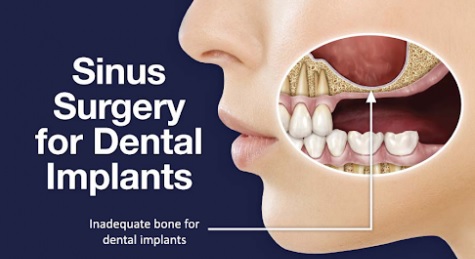Sinus Lift Surgery
Sinus Lift Operation
Sinus lift Surgery, also called sinus augmentation, is a procedure that makes it easier to place dental implants. Some patients need dental implants but have suffered bone loss, thus not having sufficient bone support necessary for implants. You can get the support you need by having a sinus augmentation.
This sinus lift surgery increases the amount of bone in the upper jaw that is required for dental implants. This is one of the most common bone grafting procedures for dental implant patients Golden Smile apply.
Who Needs A sinus lift surgery?

Over the last 25 years, dental implants have become more readily available, making them an increasingly common dental procedure. As more people get dental implants to replace missing teeth, sinus lifts also have become more common. Without enough bone, the dental implant won’t properly secure and can fail. Some of the reasons why you may have experienced bone loss in the jaw include:
- birth defects
- cancer
- natural variation, where your sinus cavities are very large or jawbone very thin
- periodontal disease
Also, bone in the jaw can be a use-it-or-lose-it prospect. If you have experienced tooth loss, your jawbone may start to get thinner over time.
A sinus augmentation may be necessary if you are missing teeth and jawbone in the back of your jaw, near your sinuses. Jawbone and teeth in this area could be lost due to birth defects, periodontal disease, cancer, other medical conditions, or just the natural healing process. A sinus lift can also be used if your sinuses are too close to your upper jaw and you need more space to place the implant.
How Is a Sinus Lift Surgery Done?
Now, we’ll go over what you can expect in surgery so that you’re fully prepared and confident as you go into your sinus lift. Here’s a general sequence of events that take place during sinus lift surgery:
- The surgeon cuts the gum tissue.
- The tissue is raised, exposing the bone underneath.
- The surgeon cuts a small circle in the bone.
- The surgeon lifts the bony piece into the sinus cavity space and fills the hole with a bone graft.
- The surgeon closes the incision.
- The healing process begins.
In about 4-12 months after your sinus lift surgery, your dentist will place your implants. This time in between gives the new bone time to merge correctly with your existing bone. The amount of time between your surgery and getting your implants placed depends on how much bone you needed. Your dental professional will let you know when they’ll be able to place your implants.
What Happens During the Sinus Augmentation Procedure?
The sinus lift surgery procedure is a safe and straightforward procedure. A sinus augmentation is generally performed at the prosthodontist’s or oral surgeon’s office. The entire process takes between 90 minutes to two hours.
- First, the patient is sedated using local and/or general anesthesia. If necessary, a doctor may use nitrous oxide, but this is less common.
- Next, the surgeon will cut the gum tissue where your back teeth used to be to expose the jawbone.
- With the tissue raised, and the jawbone exposed, the surgeon will cut a small circle in the bone through which they can gently push on the membrane of the sinuses.
- As the bony piece is lifted into the sinus cavity space the hole is filled with the previously determined bone graft.
- After this is done, the procedure is complete and the surgeon will close the incision with sutures.
Cost
Sinus lift surgery costs will vary based on your:
- bone graft materials needed
- complexity of the procedure
- facility’s fees
- geographic location
- physician’s fees
The procedure costs may range from $500 to $2,000. Your doctor should review the expected fees with you prior to the procedure.
